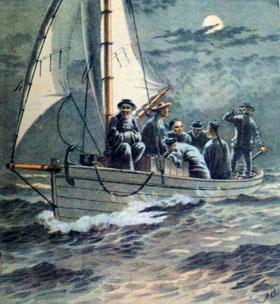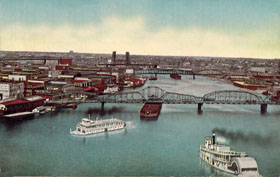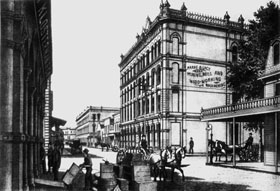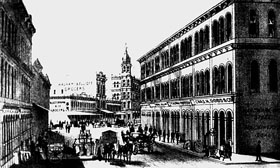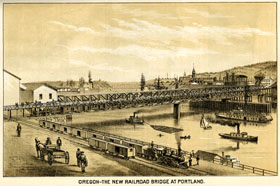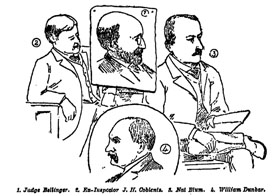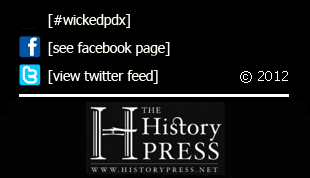
Chapter 8 | The world's dumbest-ever drug smugglers:
Page 109: This artist's rendition of Chinese laborers being smuggled into the U.S. ran on the back cover of an issue of The West Shore magazine in 1889. Nat Blum and William Dunbar, Portland's most notorious smugglers of the time, would have scoffed at this little midnight boatload as chicken scratch.
Page 111: The bustling Portland riverfront shortly after the turn of the century, with four bridges proudly on display. (Image: Postcard)
Page 112: Front Street at the intersection with C Street, which is now known as Couch, looking southward. Dunbar Produce and Grocery would have been about three blocks down on the left. (Image: The West Shore magazine)
Front Street looking south from Vine Street, a one-block-long street in the North End that is now known as Ankeny Square. (Image: The West Shore)
Page 116: A sketch of the first Steel Bridge, depicted the year before the bridge actually went into service linking Portland with Albina. Locomotives crossed on the lower level of the bridge, and pedestrians and buggies and wagons went above. The bridge shown here was replaced in 1912 with the Steel Bridge that is still in service today. (Image: The West Shore)
BONUS AUDIO:
Chinatown: The gambling, the girls and the opium: This is a podcast from Doug Kenck-Crispin and Andy Lindberg's "Kick Ass Oregon History" series. An excellent explanation of how opium was used in 1890s Portland appears just before the 8-minute mark in this podcast.
Page 116: A drawing from the Morning Oregonian made during the trial of Nat Blum, William Dunbar, Jim Lotan and the other suspects in the smuggling conspiracy. From left to right: Judge Bellinger; Lotan employee and fired customs inspector J.T. Coblentz; William Dunbar; and Nat Blum. (Image: Portland Morning Oregonian)
